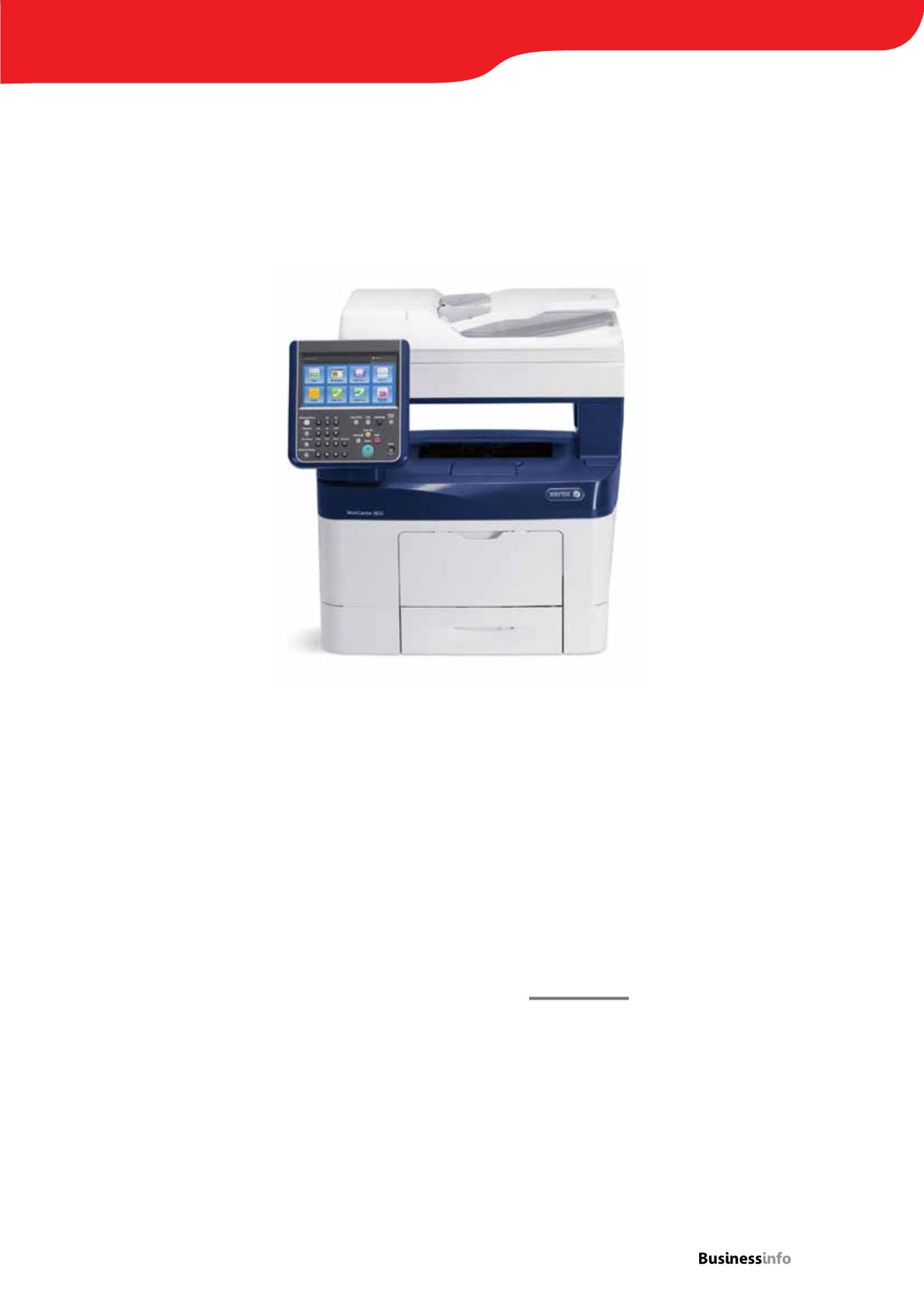
Digitisation
As printer vendors transform
themselves into document
processing specialists, they are
encouraging customers to embrace
digitisation to reduce costs, improve
customer service and increase
productivity. Through a combination
of consultancy and MFP-enabled
workflow automation solutions, they
are encouraging users to drive paper
out of their organisations and adopt
electronic workflows.
Ricoh, for example, actively promotes
electronic billing and invoicing through
Ricoh Invoicing Services. It has just
released the latest annual Billentis
Report, which suggests that European
businesses could cut invoicing costs by
up to 80% by switching to electronic
billing and invoicing.
The study estimates that 42 billion
e-bills and invoices will be issued
globally this year and highlights
European efforts to encourage the
shift to paperless billing. Denmark,
for example, banned paper invoices
from its public sector as early as 2005,
producing savings for today’s tax-
payers of
€
150 million a year, plus
savings of
€
50 million for businesses.
In Italy, the government’s adoption of
an e-procurement system has reduced
costs by over
€
3 billion.
Edward Gower-Isaac, vice president
of Business Process Services at
Ricoh Europe, said: “Digitisation is
undoubtedly a key driver of the growing
pan-European appetite for e-invoicing.
Businesses realise that ‘going digital’
is no longer a differentiator, but a
paramount requirement for any
organisation with hopes of a long-term
future.”
Clear benefits
The benefits of digitisation are widely
understood by senior managers. In a
2014 Ricoh Europe survey conducted
by Coleman Parkes, 73% of business
leaders said that achieving digital
maturity would lead directly to
an increase in profits, with 62%
agreeing that it would increase their
organisation’s appeal to potential
investors and new owners.
Despite awareness of the benefits
of digitisation, the scale of the
transformation involved means that
many organisations require additional
expertise to help them make the change.
In the Coleman Parkes study, 50% of
business leaders felt they could not
achieve digital maturity without the
support of an external partner.
Gower-Isaac commented: “As
with any change-based programme,
organisations are rightly seeking
external help as they make the move to
e-invoicing. Ricoh’s Invoicing Services
allows businesses to easily manage
both paper and digital invoices at the
same time. Not only do they stand
to benefit from third-party expertise,
their workforce is relieved of this often
laborious and time consuming task.
Crucially, this gives them the capacity
to undertake other business-critical and
cash generating activities.”
Enterprise digitisation
Another company successfully making
the transition to solutions and services
is Lexmark. It has been spending
income earned from its traditional print
business to acquire software companies
specialising in information management,
notably Perceptive Software.
Through a combination of software
solutions and ‘smart’ MFPs, Lexmark
offers a range of solutions to facilitate
Are you making the most of your office MFP’s ability to transform
business processes?
Altered states
enterprise digitisation projects. Its latest
is Perceptive Checklist Capture, which
helps minimise the risk of human error
in business processes by pulling together
documents and data from smartphones,
desktop PCs and MFPs.
By removing manual steps involved
in the collection of related documents,
Perceptive Checklist Capture reduces the
rate of mis-filed or mis-classified content
and frees knowledge workers to focus on
customer service and compliance.
It can be used to capture photos
and other content with a smartphone,
tablet or Lexmark smart MFP and add
them, along with computer files from a
desktop PC, to a project or case folder.
It notifies users when a document is
missing or incomplete and delivers
information directly to the user’s core
business system, with storage in a central
repository for rapid retrieval.
Leveraging the Perceptive Evolution
platform, the capture interface provides a
consistent and unified experience across
all devices and platforms.
Lexmark says that Perceptive
Checklist Capture has applications in
almost every industry, including retail
(incident management), government
(public assistance), banking (new loan or
account automation), insurance (claims),
back office (HR case management),
manufacturing (logistics document
management) and higher education
(enrolment).
As an example, it cites the case of
a loss prevention agent who, on arrival
at the location of a reported theft, can
launch a smartphone app giving instant
access to open case folders. On opening
a folder, the agent is presented with a
checklist of items that still need to be
collected, e.g. photographic evidence.
From the same interface, the agent can
take a photo, which is automatically
added to the folder.When a checklist
is complete, the case is automatically
flagged as ready for review.
Workflow automation
Workflow automation is a priority
for Xerox too. Xerox Large Enterprise
Operations recently announced four
new document processing solutions
Businesses
realise that
‘going digital’
is no longer a
differentiator,
but a
paramount
requirement
magazine
15
01732 759725
Continued...


